RUSBYI (Greene) Rose, 1924
Synonyms :
Cotyledon rusbyi Greene (1883) / Dudleya rusbyi (Greene) Britton & Rose (1903) / Echeveria rusbyi (Greene) Nelson & Macbride (1913)
Graptopetalum orpetii E. Walther (1930)
Graptopetalum sinaloensis Aviña et al., 2020 See Note below.
Distribution : USA (C and S Arizona), Mexico (Sonora, W Chihuahua, NW Sinaloa); esp. north-exposed shaded slopes and cliffs, up to 1600 m.
Description (by J. Thiede in IHSP, 2003) :
Rosette plants; main root thickened to 8 mm diam.
Stems erect, short, to 1.5 cm, branching from below the rosette.
Rosette flattened, 2 – 6 (-10) cm in diam., with 10 – 35 (-50) condensed leaves, normally mat-forming.
Leaves rhombic to obovate to oblanceolate, acute or acutish, 1.5 – 5 x 0.6 – 1.5 cm, 1 – 5 mm thick, pale green or reddish to violet, mucro 1 – 3 mm, at least upper ½ of the leaves papillose.
Inflorescences 4 – 17 cm, shell-pink or ± violet, thyrses with 2 – 5 spreading 2-branched or mostly zigzag scorpioid 1 – 9 cm long branches, these spreading or young coiled, with 2 – 9 (-12) flowers, middle branches with 1 – 4 secondary branches which can again branch, pedicels (1-) 3 – 8 (- 13) mm.
Flowers (5- to) 6- to 7- (to 10-) merous, calyx cup-shaped, 2.5 – 4 (-6) x 3 – 6 (-8) mm, sepals appressed or upcurved, almost free, elliptic, acute, mucronate, somewhat unequal, 2.5 – 6 x 0.7 – 1.8 mm, corolla 14 – 21 mm in diam., petals narrowly triangular-lanceolate, 7 – 10,5 x 1.2 – 2 (-2.5) mm, yellowish-white (white or greenish), tube bowl-shaped, 0.7 – 3.5 x 3 – 4 mm, lobes somewhat acute, with 6 – 8 dark red cross-stripes, more conspicuous and denser in the apical ½.
Cytology : n = 31, 32, 33, 62, ± 93
Note :
1. Habitat : North exposed shaded cliffs means that the plants dislike hot greenhouses !
2. A form of south-central Sinaloa recently has been described as Graptopetalum sinaloensis - of course the name is not correct, should read G. sinaloense. In view of the insignificancy of the differences between this form and the type, a classification of the former as "a new species to science" is in no way justified. An amplification of the original description would have been far more appropriate.
Graptopetalum rusbyi in habitat in Gila County AZ, east of Superior :
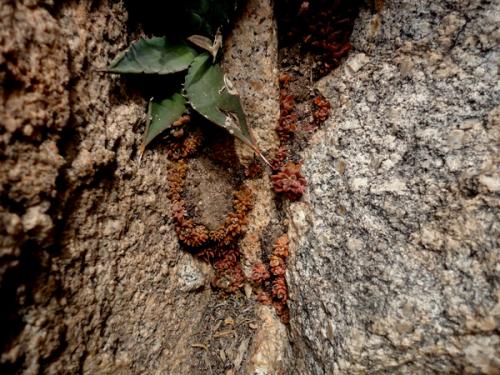
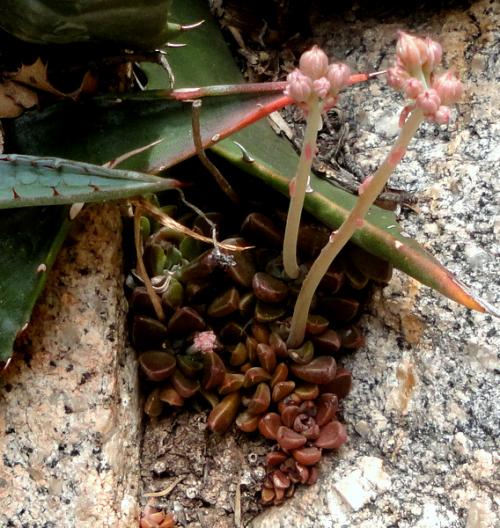
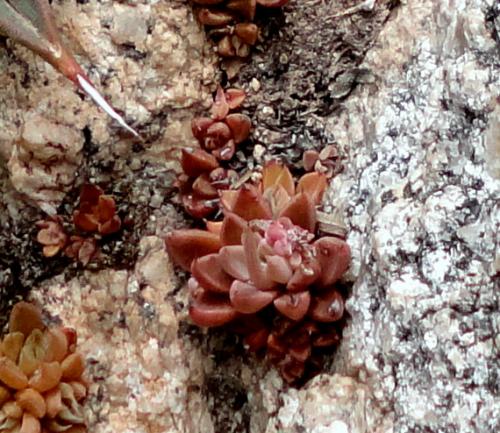
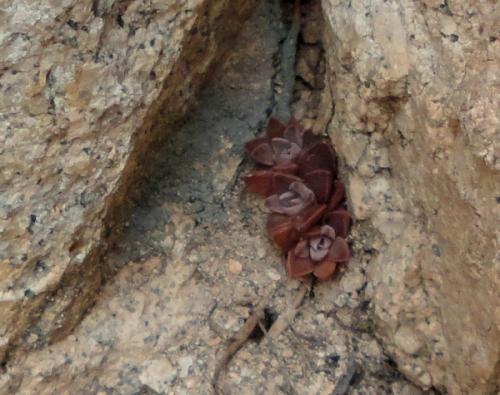
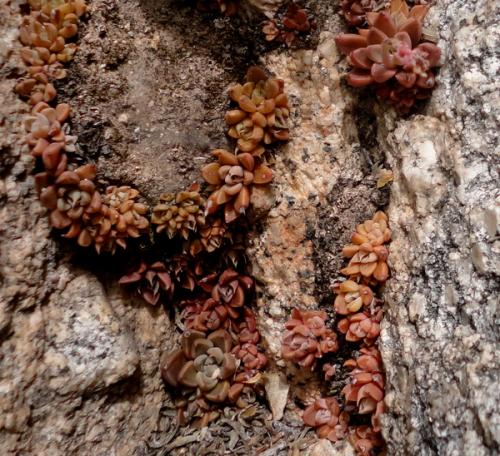
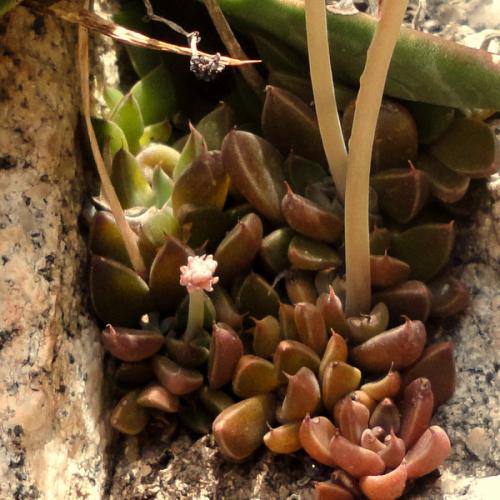
Plants in cultivation :
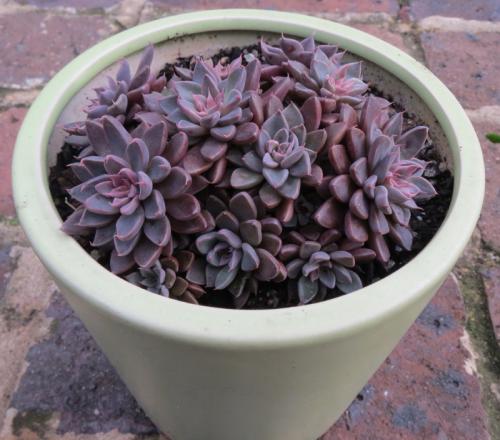

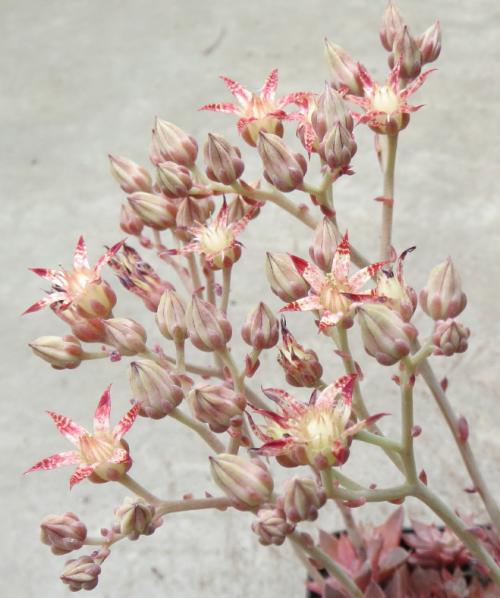
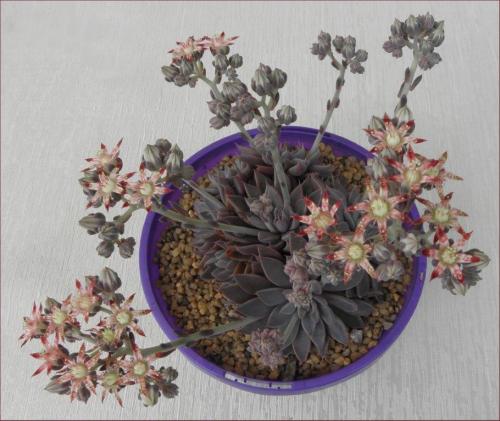
Photo Joan Steele
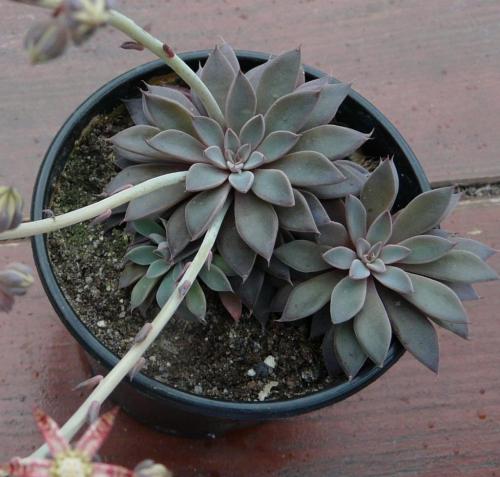
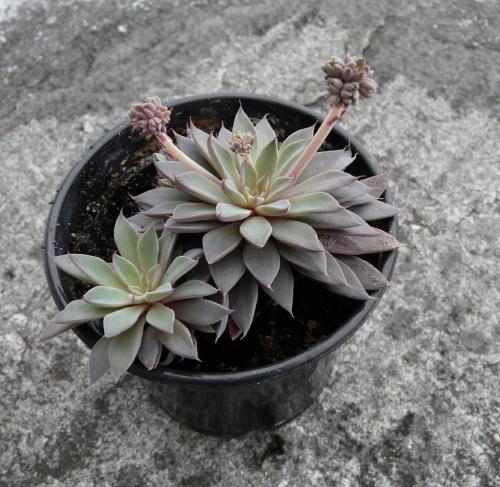
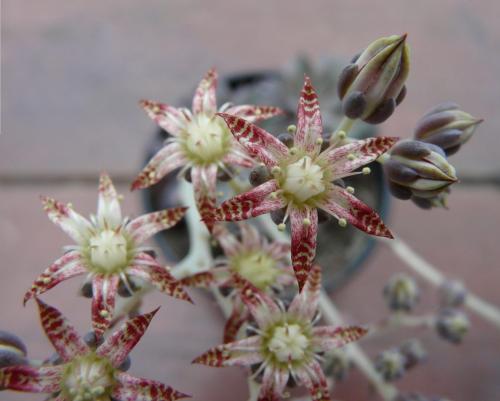
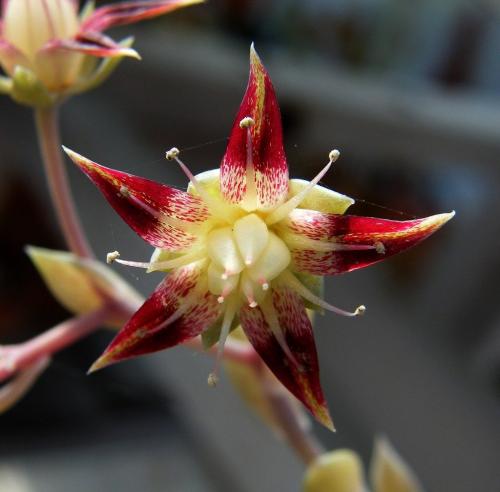
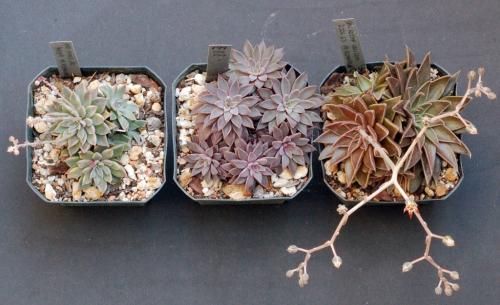
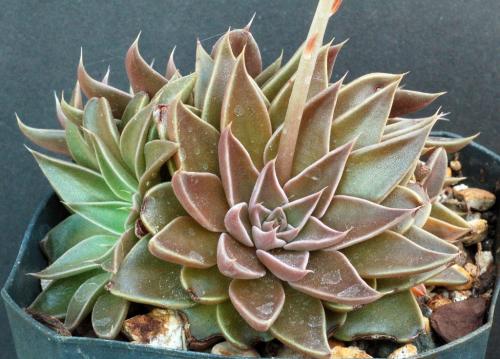
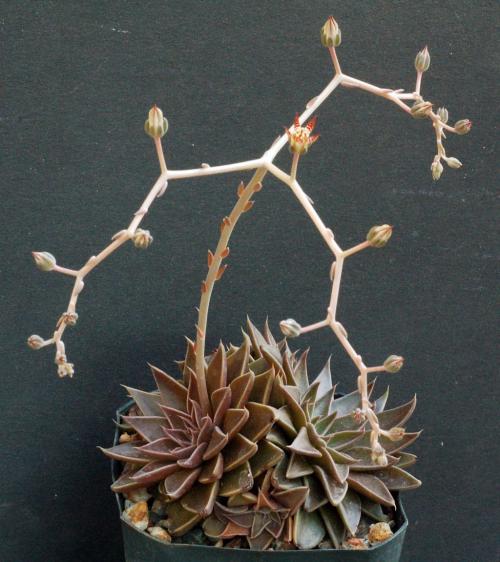
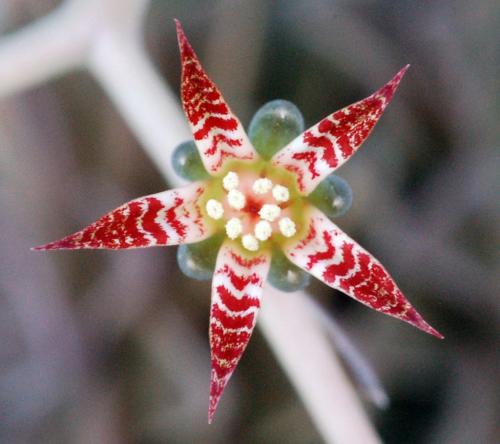
G. rusbyi (Municipio Yecora, Sonora, Mexico)
Photos Bernie DeChant